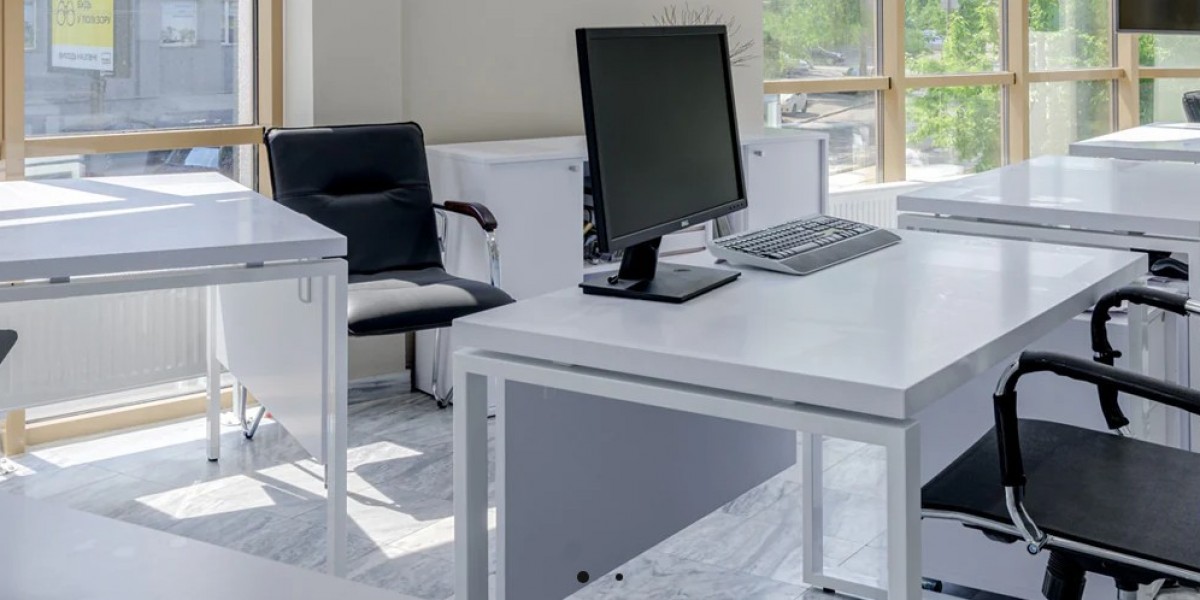Creating an ergonomically comfortable workspace is crucial for maintaining health and productivity, especially if you spend long hours at your desk. The right office table can significantly impact your posture, comfort, and overall well-being. Heres a guide to choosing the right office table that prioritizes ergonomic comfort.
1. Consider the Desk Height
- Adjustability: Look for adjustable desks that allow you to change the height to suit different tasks and preferences. Sit-stand desks are ideal for alternating between sitting and standing positions.
- Fixed Height: If you opt for a fixed-height desk, ensure it aligns with your chair height to maintain a proper ergonomic setup. The standard height for most desks is around 28-30 inches, but this can vary based on individual needs.
2. Evaluate Desk Surface Size and Layout
- Surface Area: Ensure the desk has ample surface space for your computer, documents, and other work materials. A larger surface area allows for comfortable movement and reduces clutter.
- Depth: The desk should be deep enough to allow you to sit comfortably with your back supported and your elbows at a 90-degree angle. Typically, a desk depth of 24-30 inches is recommended.
3. Choose a Shape That Fits Your Workspace
- Rectangular Desks: Provide a straightforward, traditional layout with plenty of space for multiple monitors and work materials.
- L-Shaped Desks: Offer additional surface area and can fit into corners, making them suitable for larger workspaces or for those who need extra space for different tasks.
- U-Shaped Desks: Provide a more expansive work area and can be beneficial for multitasking or accommodating multiple monitors and office equipment.
4. Look for Built-In Ergonomic Features
- Cable Management: Integrated cable management systems help keep cords organized and out of the way, reducing clutter and potential hazards.
- Keyboard Tray: An adjustable keyboard tray allows you to position your keyboard and mouse at an optimal height, reducing strain on your wrists and shoulders.
- Monitor Stand: A built-in or adjustable monitor stand helps position your screen at eye level, reducing neck strain and promoting better posture.
5. Ensure Adequate Legroom
- Clearance: Make sure theres enough space under the desk for your legs to move comfortably. This includes considering the height of the desk as well as the depth of the space underneath.
- Footrest: If needed, use a footrest to support your feet and maintain proper posture, especially if your desk height is fixed.
6. Select Ergonomic Materials and Finishes
- Surface Material: Choose a smooth, durable surface material that is comfortable to work on and easy to clean. Options include wood, laminate, and tempered glass.
- Edge Design: Rounded or beveled edges can reduce pressure on your forearms and wrists, contributing to overall comfort.
7. Check for Customization Options
- Modular Components: Some desks come with modular components that allow you to customize the layout and functionality based on your needs.
- Adjustable Features: Look for desks with adjustable components, such as height-adjustable legs or customizable shelves, to tailor the desk to your ergonomic preferences.
8. Consider Desk Location and Lighting
- Placement: Position your desk to take advantage of natural light without causing glare on your computer screen. Ensure the desk is placed in a way that promotes a comfortable viewing angle.
- Task Lighting: Use adjustable task lighting to reduce eye strain and ensure proper illumination for your work area.
Recommended Ergonomic Desk Options
Fully Jarvis Standing Desk
- Features: Height-adjustable, programmable height presets, available in various sizes and finishes.
- Benefits: Promotes frequent movement and ergonomic adjustments, enhancing comfort and reducing the risk of strain.
Herman Miller Aeron Desk
- Features: Customizable height, built-in cable management, and ergonomic design.
- Benefits: Provides ample surface area and integrates ergonomic features for optimal comfort.
Autonomous SmartDesk Pro
- Features: Electric height adjustment, programmable settings, and a large work surface.
- Benefits: Offers flexibility for sitting and standing positions, with a focus on ergonomic support.
Steelcase Gesture Desk
- Features: Height-adjustable, various shapes and sizes, integrated cable management.
- Benefits: Designed to support a wide range of postures and work styles, enhancing overall ergonomic comfort.
FlexiSpot E7 Adjustable Desk
- Features: Dual-motor height adjustment, programmable height presets, and sturdy construction.
- Benefits: Provides smooth and reliable adjustments for different sitting and standing positions.
Conclusion
Selecting the right office table for ergonomic comfort involves considering height adjustability, surface size, shape, and built-in features that support your work habits and posture. By focusing on these aspects, you can create a workspace that enhances your comfort, productivity, and overall well-being. Whether you choose a sit-stand desk, an adjustable model, or a table with ergonomic features, prioritizing ergonomic design will lead to a more comfortable and efficient workspace.






